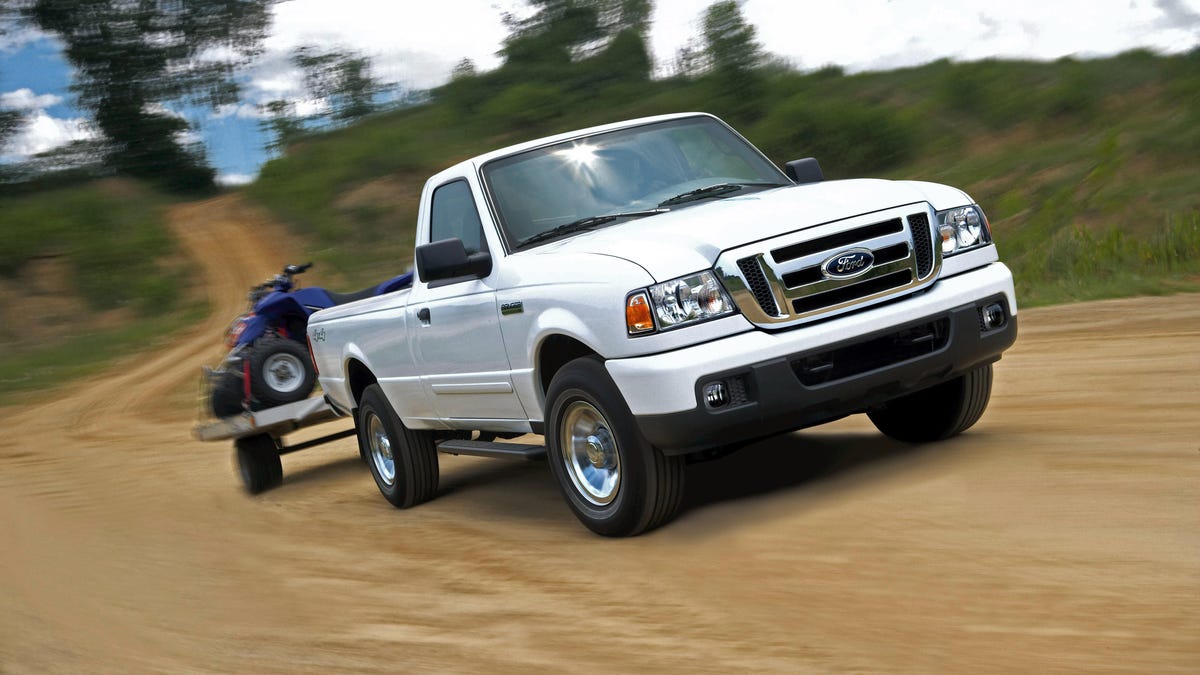Ford Ranger: Where it's been and what we know about the new 2019 model
Looking back at the history of Ford's small pickup truck in the US before its 2019 revival.

At the 2017 Detroit Auto Show Ford revealed that it would bring the Ranger pickup back to the US in 2019, but revealed little else at the time. We would have to wait until this year's Detroit show to physically see the North American-bound model and learn about one of the drivetrains it'll be equipped with when it hits dealers early next year. When Ford finally does reenters the midsize pickup market, it will have a formidable group of competitors to deal with including the Chevrolet Colorado, GMC Canyon, Nissan Frontier, Toyota Tacoma and Honda Ridgeline.
The previous-generation Ranger vanished from showrooms in the US following the 2011 model year. However, the nameplate continued on uninterrupted in other markets around the world. Not shockingly the foreign market model provided Ford a solid foundation to develop the truck that will return here.
With a bit of a wait still before sales of the 2019 Ranger begin, let's take a jog down memory lane for a look at the history of the Ford F-150's little brother here in the United States. After that, we'll review everything we know so far about the brand-new truck.
1983-1992 First-generation Ranger: Tagging in for the Courier
The Ranger's North American story began during the 1983 model year when Ford introduced the new small pickup truck to replace the Mazda-built Courier. At launch, the Ranger was offered with four engine options that included a base 2.0-liter four-cylinder with 73 horsepower, 2.3-liter four with 79 horsepower and a 2.8-liter V6 pumping out 115 horsepower.
1985 Ford Ranger
A naturally aspirated 2.2-liter diesel built by Mazda was also available making 59 horsepower and 90 pound-feet of torque, which was replaced in 1985 by a Mitsubishi 2.3-liter turbocharged diesel with 86 horsepower and 134 pound-feet of twist. Sadly, Ford would drop the diesel engine option following 1986.
The first-generation Ranger would undergo a major facelift for 1989 with frame improvements and styling revisions for both the exterior and interior. On the outside, flush headlights, new grille, hood and front fenders spruced things up, while the cabin enjoyed a new dashboard. A 2.3-liter four with 100 horses and 133 pound-feet of torque served as the base power option connected to either a five-speed manual or available four-speed automatic.
1993-2011 Second-generation Ranger: A stylish Splash and Mazda clone
2000 Ford Ranger EV
Ford released the second-generation Ranger in 1992 as a 1993 model with a freshened design and available Splash version. The boxy look was replaced by a rounder sheetmetal for a sleeker appearance. The Splash featured even more visual punch with a flare side bed, chrome wheels, lower suspension and special decals affixed to the sides and tailgate.
Power options in 1993 included the carryover 2.3-liter four-cylinder, 3.0-liter V6 with 145 horsepower and range-topping 4.0-liter V6 making 160 horsepower and 225 pound-feet of torque.
A substantial update came in 1998 with Ford giving the Ranger a longer wheelbase, upgraded frame, revised suspension and slight visual changes. Minor styling updates were also performed later on for the 2004 and 2006 model years.
Also in 1998, Ford offered an EV version of the Ranger based on a regular cab body. From the outside, the electric Ranger distinguished itself from gas models with a charging door in the front grille, bed cover for better aerodynamics, lack of an exhaust pipe and small "Electric" side badges. Power came from a 60-horsepower electric motor driving the rear wheels for about 65 miles of driving range. Ford ended Ranger EV production following 2002.
During the Ranger's second-generation run, it was also rebadged and offered as the Mazda B-Series from 1994 to 2009. Besides different grilles and emblems, the Mazda offshoot was identical to the Ford.
2019 Ranger: Coming back to America
2019 Ford Ranger
With US sales of the new Ranger still roughly a year away, Ford hasn't released a ton of details regarding its new midsize pickup truck contender. We do know that light styling revisions have been done for tougher looks with new grilles, aluminum hood with dual bulges and a frame-mounted steel bumper. The sides get front quarter badges, fender well molding and bed rail trim. And at the rear, there's an aluminum tailgate with a spoiler for better aerodynamics and the high-mounted handle borrowed from the F-150.
The only confirmed engine at this time is a 2.3-liter turbocharged four-cylinder modified for truck duty with a forged crankshaft and connecting rods comparable to the unit available in the Mustang. Ford isn't releasing output figures at this time, but it's targeting best-in-class torque among gas four-cylinders. Bolting up to the engine is a 10-speed automatic transmission in two- and four-wheel-drive configurations.
Story has been updated to include details on the US-bound 2019 Ford Ranger, which made it world debut at the 2018 Detroit Auto Show.

